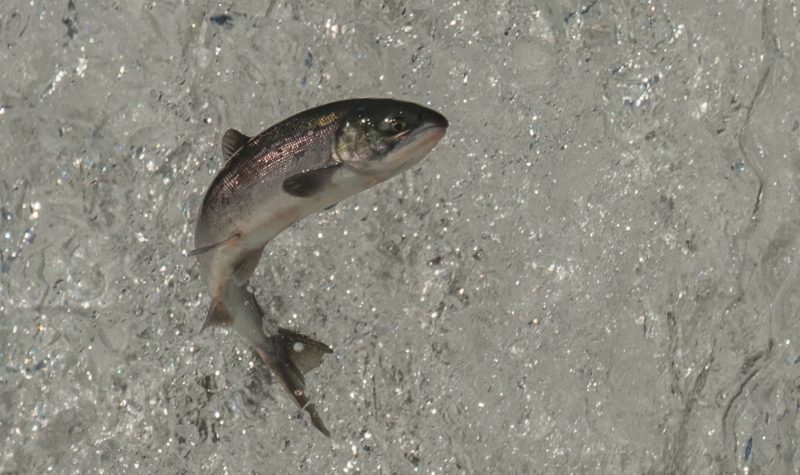Watersheds across the region and beyond are in a state of flux: Not only is climate change having a devastating impact on current populations and habitats, but climate change could also potentially open up new areas for salmon to thrive where they havent in the past.
Morice Lake, south of Houston, B.C., was once a major producing sockeye salmon run for the Wet'suwet'en. However, in recent decades the number of salmon has dwindled and the Wet'suwet'en want to find out why. Climate change, one the one hand, is creating very difficult conditions for salmon in some areas. But in others, climate change could actually allow for salmon to populate new areas that historically hasn't been ideal conditions for salmon to thrive.
Dr. Mike Price, the Liber Ero Postdoctoral Fellow with the Earth to Ocean Research Group and Moore Lab at Simon Fraser University, has been conducting a smolt program at Morice Lake, an important salmon population for the Wet'suwet'en Nation, which has been depressed for decades. Dr. Prices' work measures the size of one and two-year-old baby salmon to understand their size in relation to their survival rate once they each the ocean. If they leave the safety of the nursery lake after two years rather than one, the salmon are twice the size, which means better ocean survival and the more likely that salmon will return home in a few years to spawn and make way for more Morice salmon.
"When they do spend an extra year in the lake, they are considerably larger," said Price. "Whether that translates to improved survival, that is a question that we're hopeful to answer. Looking at that April study in the 1960s, it appeared that about 60 percent of the juveniles left the lake after one year. 40 percent left after two years in the lake. This last year, roughly 72 percent of one-year-olds left after one year versus 18 percent. So there's at least an increase in the number of fish that are leaving after one year lake."
This is curious because, historically speaking, from 1913 to 1947, according to Prices' research, about 20 percent of the salmon in Morice Lake that left the lake were one-year-olds, versus 80 percent being two-year-olds. At that time runs were still consistently abundant. Trying to correlate these changes will help salmon researches better understand the impacts of climate change on salmon, where they are going in the future, and how fisheries can adapt their harvesting practices accordingly.
Hear the full episode below.


